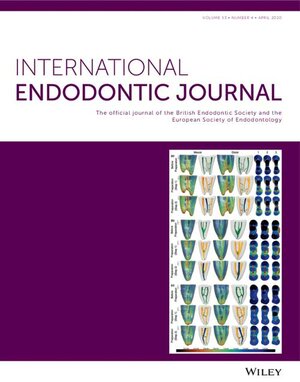Circadian rhythm disruption aggravates alveolar bone loss in rat apical periodontitis
Abstract
Background
Circadian rhythm disruption (CRD) affects the expression levels of a range of biological clock genes, such as brain and muscle ARNT-Like-1 (BMAL1), which is considered to be an important factor in triggering or exacerbating inflammatory response. However, the underlying effect of CRD on the pathogenesis of apical periodontitis, a common oral inflammatory disease, currently remains unknown. Exploring the effects and pathogenic mechanisms of CRD on apical periodontitis will be beneficial in providing new ideas for the prevention and treatment of apical periodontitis.
Methodology
The cross-sectional study was conducted among patients with apical periodontitis visiting to hospital. Rat models combining CRD and apical periodontitis were constructed, and the destruction of periapical alveolar bone was assessed by Micro-CT, H&E, and TRAP staining assay. Rat periapical alveolar bone tissues were collected for RT-qPCR and immunohistochemistry to further detect the expression of periapical biological clock genes. A model of apical periodontitis was constructed using Bmal1−/− and WT rats to further verify the key role played by Bmal1. Finally, rats raised in CRD environment were intraperitoneally injected with melatonin to restore the circadian rhythm, and the periapical alveolar bone repair was observed by Masson's staining and staining of osteogenic markers (ALP, RUNX2).
Results
A close association between CRD and acute exacerbation of chronic apical periodontitis (CAP) in patients was first found in an epidemiological survey. By constructing animal models of CRD and apical periodontitis, it was found that CRD could aggravate the inflammatory stress of apical periodontitis and even drive the acute exacerbation of CAP. Further investigations suggested that the expression of crucial clock genes, especially Bmal1, were significantly disrupted in the periapical tissue of apical periodontitis. In addition, the periapical tissue from Bmal1 knockout rat displayed stronger inflammatory response and more severe alveolar bone destruction in apical periodontitis. Restoring circadian rhythm by melatonin supplementation could effectively alleviate both the inflammatory response and alveolar bone loss in apical periodontitis.
Conclusion
CRD is a novel trigger in aggravating the inflammatory response and alveolar bone loss of apical periodontitis. Melatonin is expected to be used in the dental clinic as an important adjunctive therapy strategy for the healing of periapical tissue in apical periodontitis.

 求助内容:
求助内容: 应助结果提醒方式:
应助结果提醒方式:


